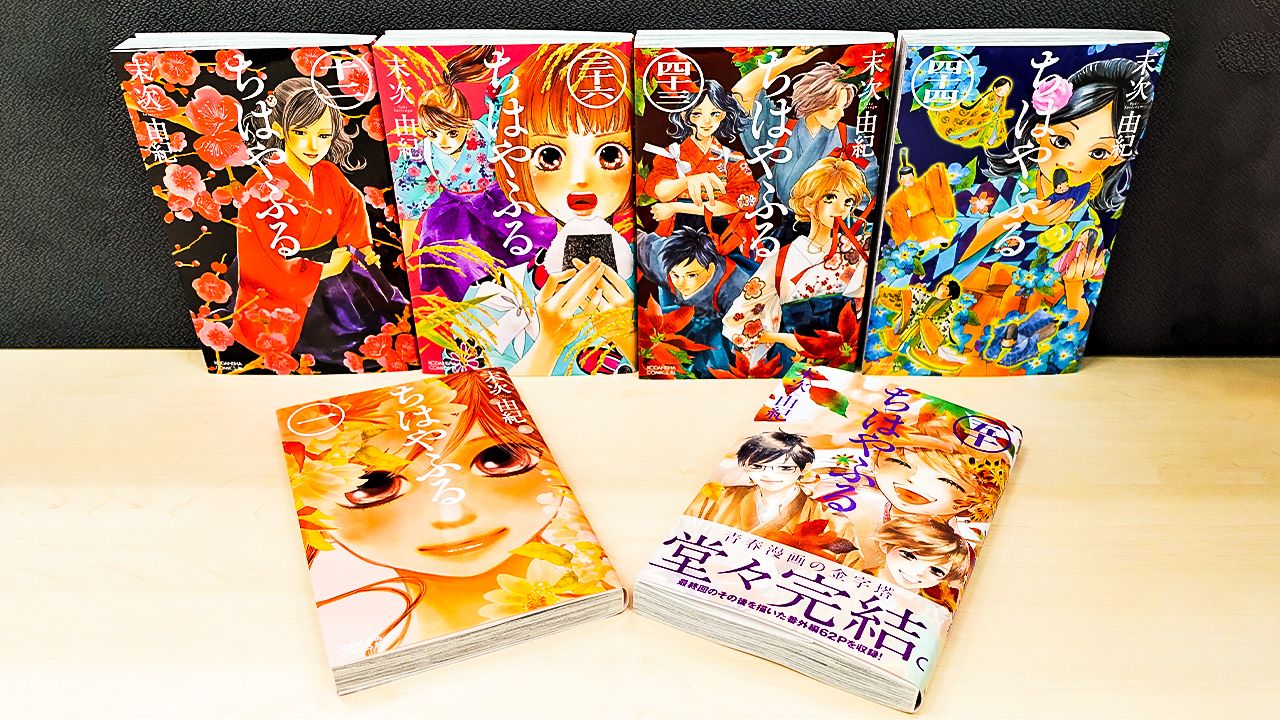
Manga as a Window on Japanese Culture
Competitive “Karuta” and Real World Reflections of Manga “Chihayafuru”
Culture Anime Manga Cinema- English
- 日本語
- 简体字
- 繁體字
- Français
- Español
- العربية
- Русский
The Origins and Rules of a Classic Game
Competitive karuta was born of a collision bridging vast distances in space and time—between Asian pastimes, modern sportsmanship, ancient literature, and European card games. That world is the setting for Suetsugu Yuki’s manga Chihayafuru, which completed its 15-year run in Kodansha’s Be Love magazine in 2022. Now considered a modern shōjo or girls’ manga masterpiece, it depicts the lives of young people devoted to competitive karuta. Despite dealing with a sport that is anything but “major league,” it became a huge hit, with televised anime and live-action film versions, through skillful exploration of the game’s hidden depths.
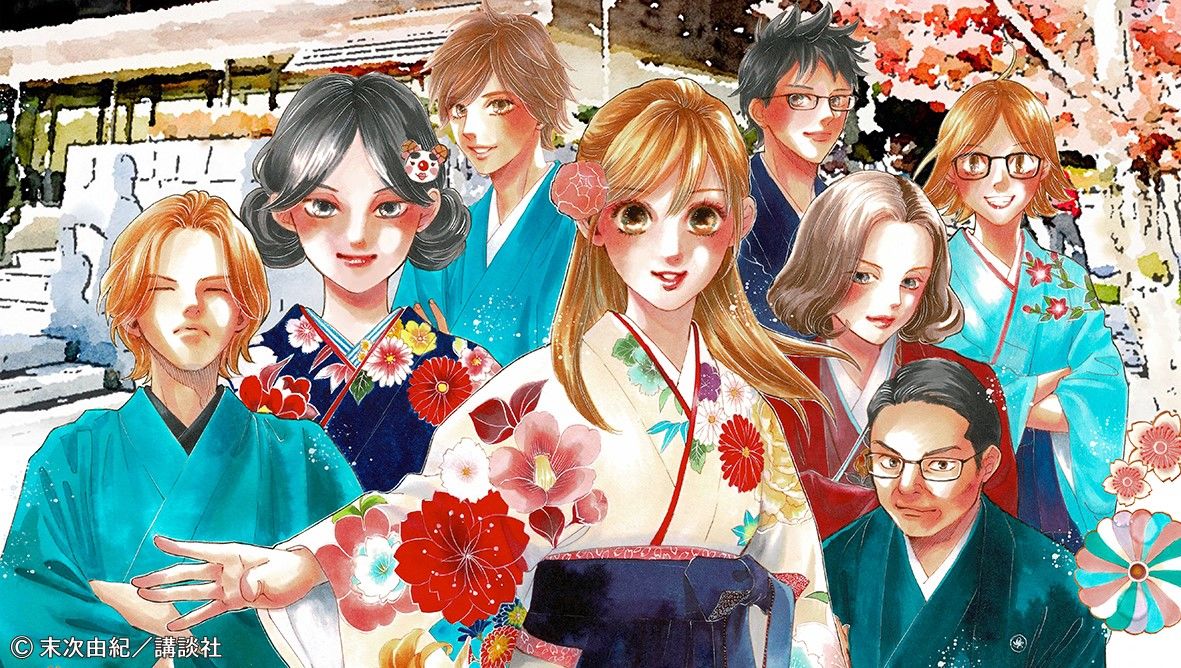
The Hyakunin Isshu Competitive Karuta Chihayafuru Ogurayama Cup was established in 2020 to introduce fans to the joys of watching the game. The fourth tournament kicks off in February 2023 in Kyoto’s Arashiyama. (© Suetsugu Yuki/Kodansha)
The Japanese word karuta derives from the Portuguese carta, which of course shares a root with the English “card.” The word, and related games, were introduced by Portuguese sailors in the sixteenth century, during the European Age of Discovery.
According to legal expert and historian Ebashi Takashi’s book Karuta, the cards those sailors brought were Latin-suit (the precursors of modern playing cards), with suits named clubs, swords, cups, and coins, although the Japanese who adopted the cards mistook the cup for a bag.
In the seventeenth century, however, the Tokugawa shogunate closed Japan’s borders to the rest of the world and restricted foreign interaction and trade. From that point on, carta transformed into a uniquely Japanese form, with popular sets that featured tanka poems and were decorated with portraits of composers. This is how Japan’s karuta came to be.
Tanka is a short poetic form consisting of 31 syllables in a 5-7-5-7-7 pattern. It is an ancient tradition, with poems recorded more than a thousand years ago. The karuta game Hyakunin isshu—which means “100 people, one poem”—uses cards recording a selection of 100 of those compiled by Fujiwara no Teika, the first of which was supposedly written by Emperor Tenji (r. 661–672), who centralized power in Japan in the seventh century, a time when local clans still held most power. His poem evokes the feeling of night falling during the harvest season.
Aki no ta no / Kariho no io no / Toma o arami / Waga koromode wa / Tsuyu ni nure tsutsu
Coarse the rush-mat roof / Sheltering the harvest-hut / Of the autumn rice-field; / And my sleeves are growing wet / With the moisture dripping through. (Trans. Clay MacCauley)
The last and 100th poet was Emperor Juntoku (r. 1210–21), who, along with his cloistered-emperor father, fought the Kamakura bakufu or shogunate to return political leadership to the emperor’s palace, but ended up defeated and exiled.
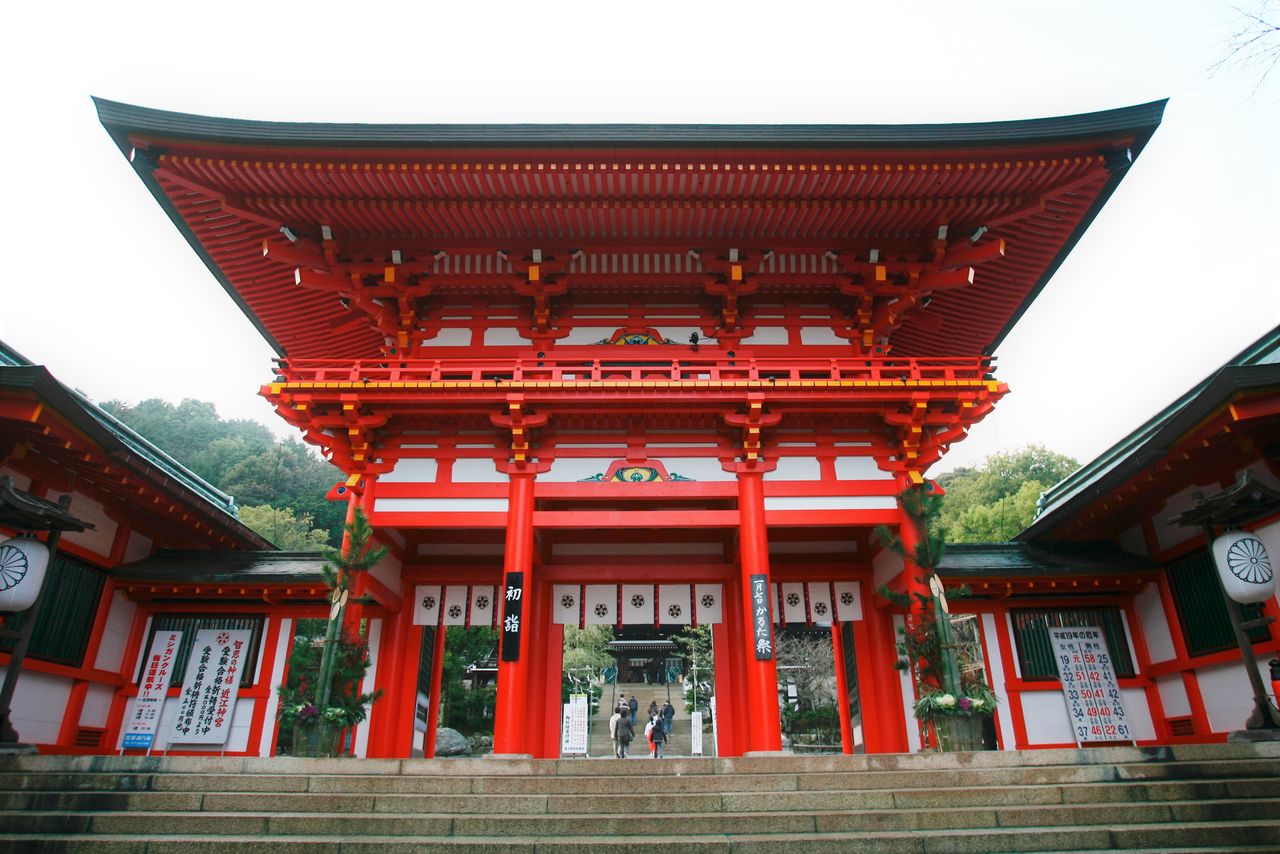
Ōmi-jingū is a shrine dedicated to Emperor Tenji, one of Japanese history’s greatest reformers and poets. As a result, it has also become known as the “karuta shrine” and hosts popular competitive karuta tournaments. (© Jiji)
The poems selected for Hyakunin isshu are not only by emperors, though. Many were written low-ranking aristocrats and priests, as well. The tanka genre overall was not originally a hobby for just the elites. There are works recorded from samurai and merchants, and Japan’s oldest poetic anthology, the Manyōshu, includes tanka from commoners and soldiers defending the borders.
The game of karuta is a matching competition. A reader reads out the first half of a poem, and the players race to find the card with the second half.
Originally conceived as a way to memorize the tanka, it eventually evolved into a game in its own right. Then, as Japan resumed international exchange in the nineteenth century, local tradition once more encountered global concepts like modern sport, and karuta was established as a competition with a set of standard rules.
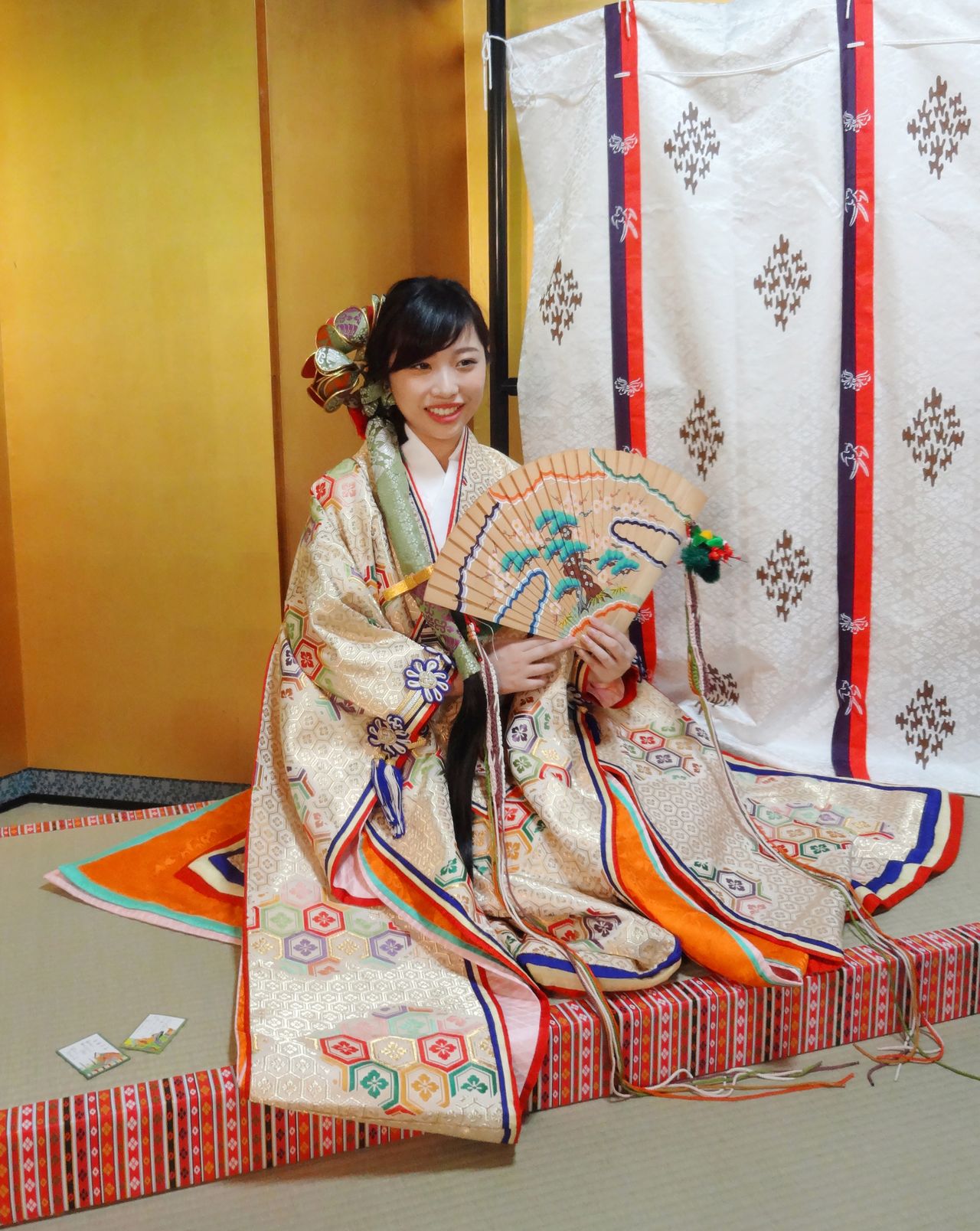
Ōmi-jingū offers visitors the chance to “become the karuta poets” with costumed photography sessions. (© Jiji)
Fierce Mental Competition
The competitive karuta world is a fierce one. Games have two players. Scattered between them are 50 of the 100 cards, and the players can line up 25 of those in their own way.
These rules add depth to the game, since the card that the reader sings out might not be in your alignment. Players are penalized for mistakes, so the game creates a tension between the two extremes of acting with speed and remaining calm to make the right decision.
Players begin by memorizing the position of the cards in front of them. This requires good memory, but simply being clever is not enough, since players must be lightning fast to get the card first. The action can get so intense that players sometimes slam hands, resulting in jammed fingers or even dislocations, fractures, and other injuries.
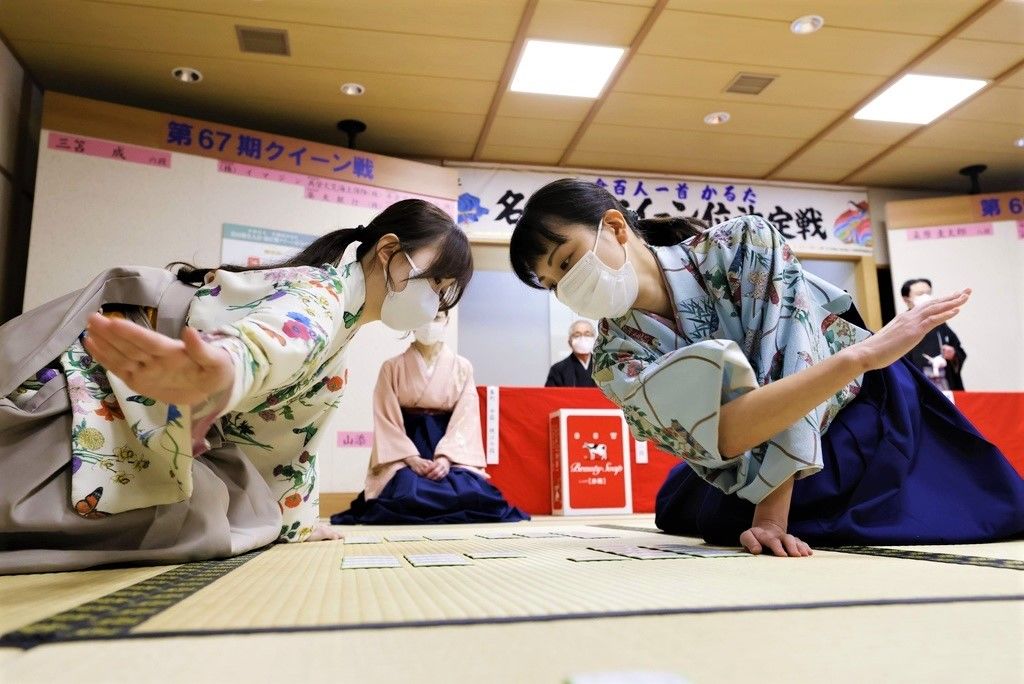
High school teacher Yamazoe Yuri took her third straight championship at the 2023 Ogura Hyakunin isshu Competitive Karuta Queen finals, held at Ōmi-jingū on January 7. (© Kyodō)
Competitive karuta men’s champions are called meijin (experts), while women are called kuiin (queens). In Chihayafuru, the ninth grader Wakamiya Shinobu appears as the youngest karuta queen in history. There is a real-life model for the character, Kusunoki Saki, who became the youngest queen ever at age 15.
The young queen retired after 10 straight championships, but Kusunoki went on to write the book Shunkan no kiokuryoku (Instantaneous Memory), which says that the five factors needed to become a strong karuta player are memory, focus, strategy, split-second action, and mental fortitude.
With all the diverse elements of the game, players have room to balance their weaknesses with strengths. In competitive karuta, then, players can succeed regardless of age or gender through hard training.
There are those, though, who seem blessed with a natural talent and can somehow hear the poem being read out faster than others. In the game, people say those players “have a good sense” for it. Chihayafuru’s protagonist, Ayase Chihaya, has that sense.
She has such good hearing when concentrating that she says even blinking can be too loud. Real players who have that good sense can apparently hear subtle changes in the pronunciation of, for example, the syllable “sa” that indicate the following sound. According to Kusunoki, when concentrating, one can come to sense changes in the air even before a sound is pronounced.
Young People Living for Karuta
Ayase is depicted in the manga as attractive and cheerful, but when she opens her mouth the only thing that comes out is karuta. This keeps her from being much of a love interest for the boys around her. Her karuta journey started when she was a sixth grader, when a transfer student, Wataya Arata, told her about the game, and gave her life its great goal.
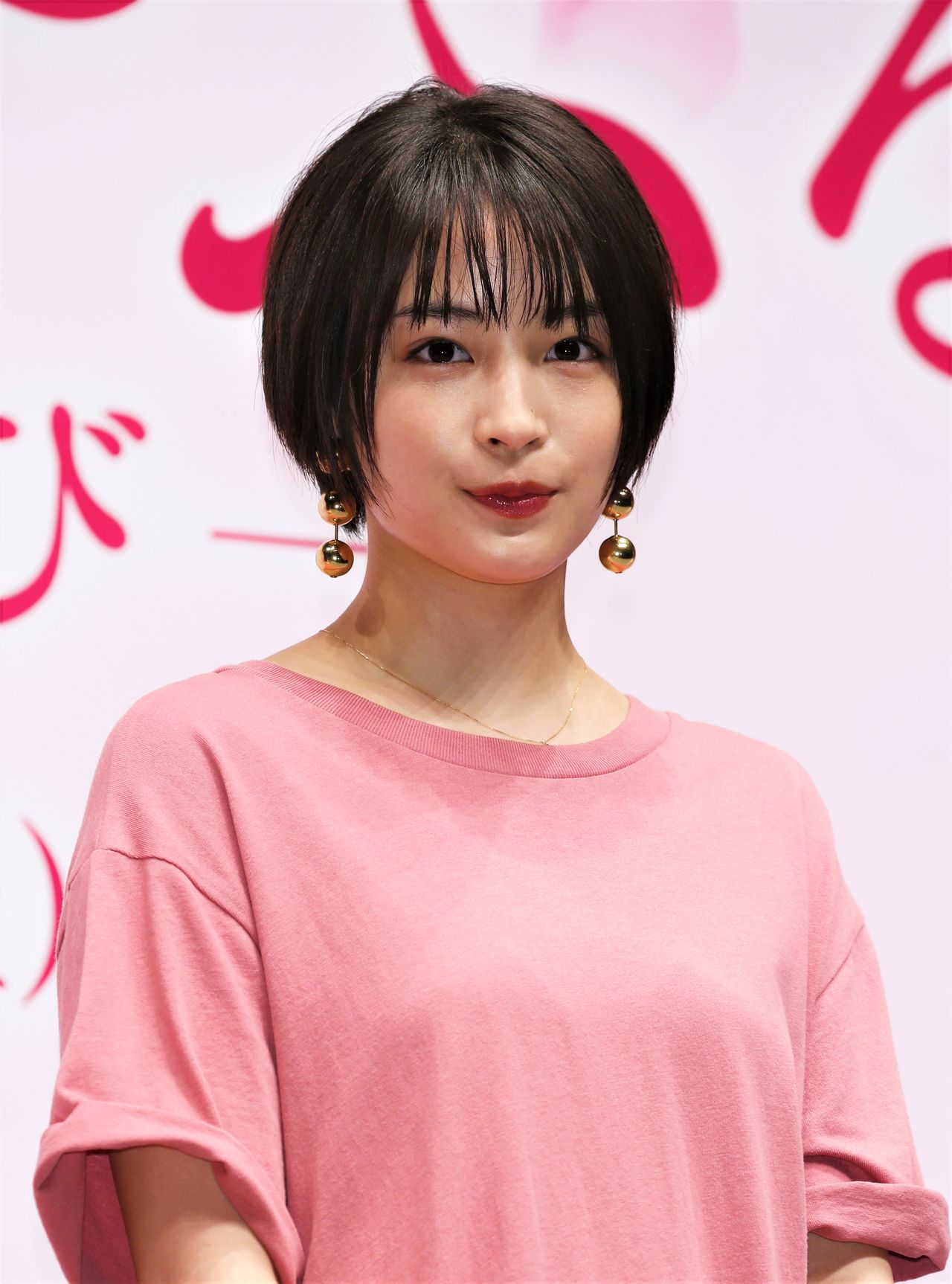
Three Chihayafuru movies were produced from 2016 to 2018. Actress Hirose Suzu played the heroine. Here, Hirose appears at a March 6, 2018, preview event for Chihayafuru: Musubi. (© Jiji)
When she reaches high school, Ayase founds a competitive karuta club, and starts holding practice matches with her friends. Blessed with outstanding sensory speed, she has the physical skills and mental fortitude for success in the game. The karuta world is a deep one, though, and among her cohort is the strongest and youngest queen in history, Wakamiya Shiori.
One of the manga’s outstanding qualities is that it does not focus solely on the naturally talented genius. There are those whose talents surpass the typical, such as Wakamiya, Ayase, and the meijin Suō Hisashi. But there are also gifted people who struggle with limitations, and more average people who simply work hard to excel. Ayase’s dream for herself is to become queen, but she also dreams of helping her high school become a karuta powerhouse.
Manga is a mysterious art form. When I read it, I find myself wanting to be among these people, a high school student myself, laughing and crying and struggling with my friends, and facing down my rivals. But in reality, I am an adult. I cannot help but feel that the time is past for me to be able to try something so drastically new . . . But then, I recall that karuta is a competition that anyone, regardless of age or gender, can play.
Perhaps I, too, can face new challenges and pour all my passion into the fight! Chiharafuru is a work that truly makes us feel that youth can return, over and over again.
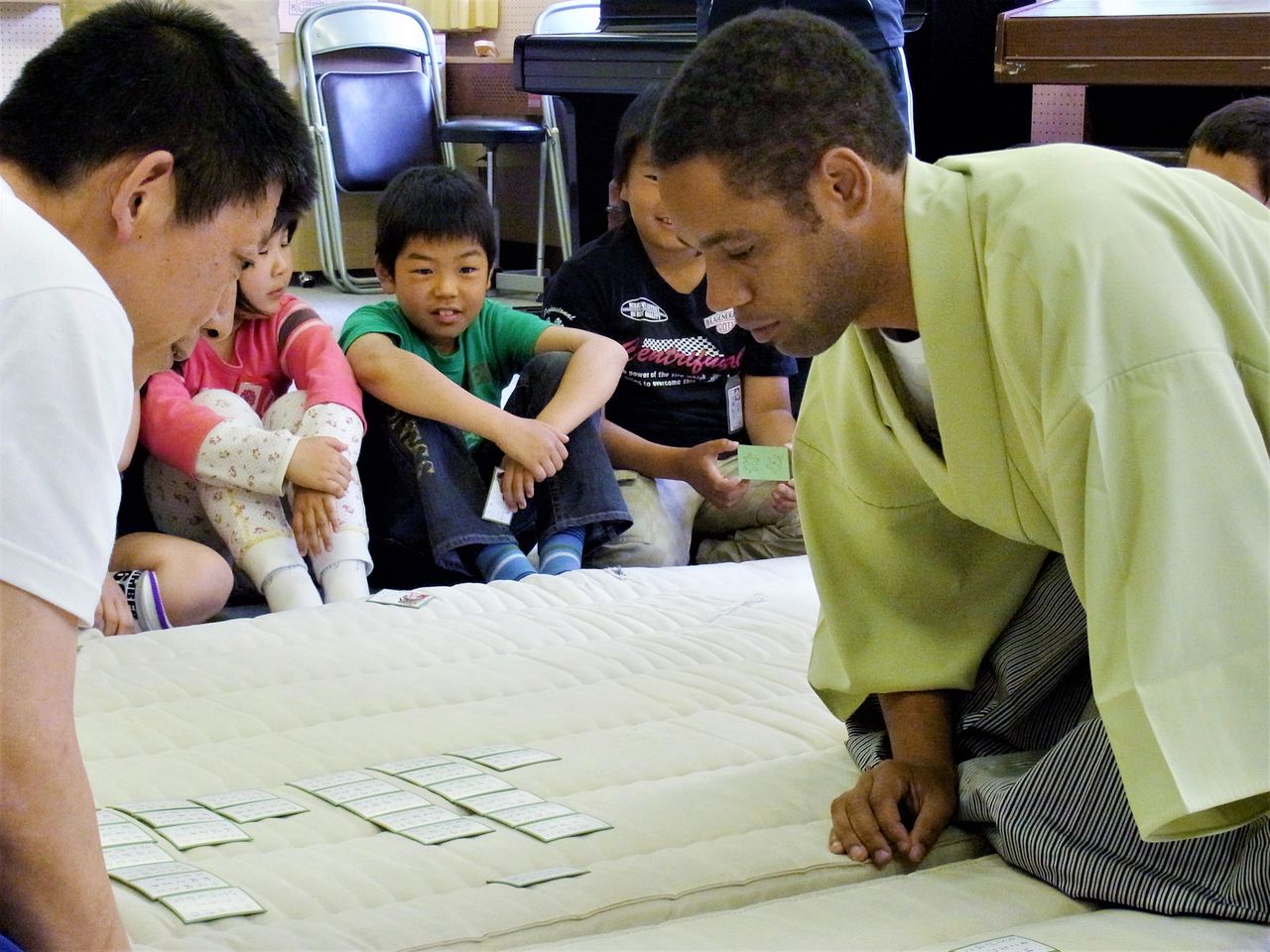
The number of people overseas who have embraced competitive karuta due to Chihayafuru is increasing. Pictured is New Zealand native Linton Rathgen, who visited Higashihama Elementary School in Ishinomaki, Miyagi Prefecture, on May 17, 2011, to demonstrate karuta for children affected by the Great East Japan Earthquake. (© Jiji)
Now, romance is usually a major theme in shōjo manga, and Chihayafuru is no exception. Ayase pursues her karuta mentor Wataya, but complication comes from childhood friend Mashima Taichi, who is always by her side.
This kind of love triangle is a common motif in the genre, but this work never dips too deeply into the romantic elements, as the characters seem to hold misgivings about love in general, even though there are many love tanka.
The 2014 Disney film Frozen depicted “true love” not as romantic love, but that between sisters, and many modern princess-focused works leave out romance altogether. Chihayafuru, though, was a pioneering work in that trend as it shows that romance does not need to be a story’s impetus just because the protagonist is a girl.
(Originally published in Japanese. Banner photo: Chihayafuru began running in the December 2007 issue of Kodansha’s Be Love magazine, and ended after 247 chapters in August 2023. The 50 book volumes have sold over 27 million copies in total. © Nippon.com.)
manga anime poetry karuta card game Manga and Anime in Japan